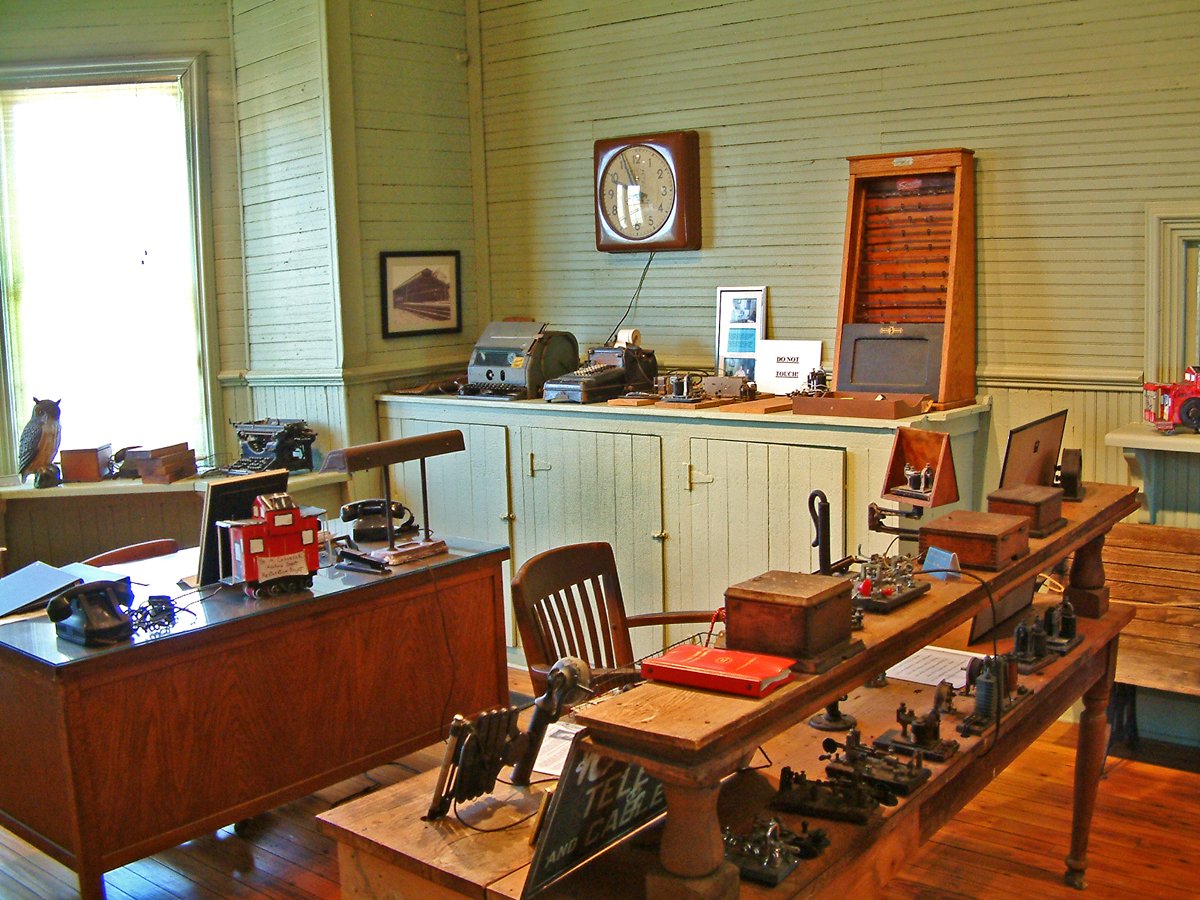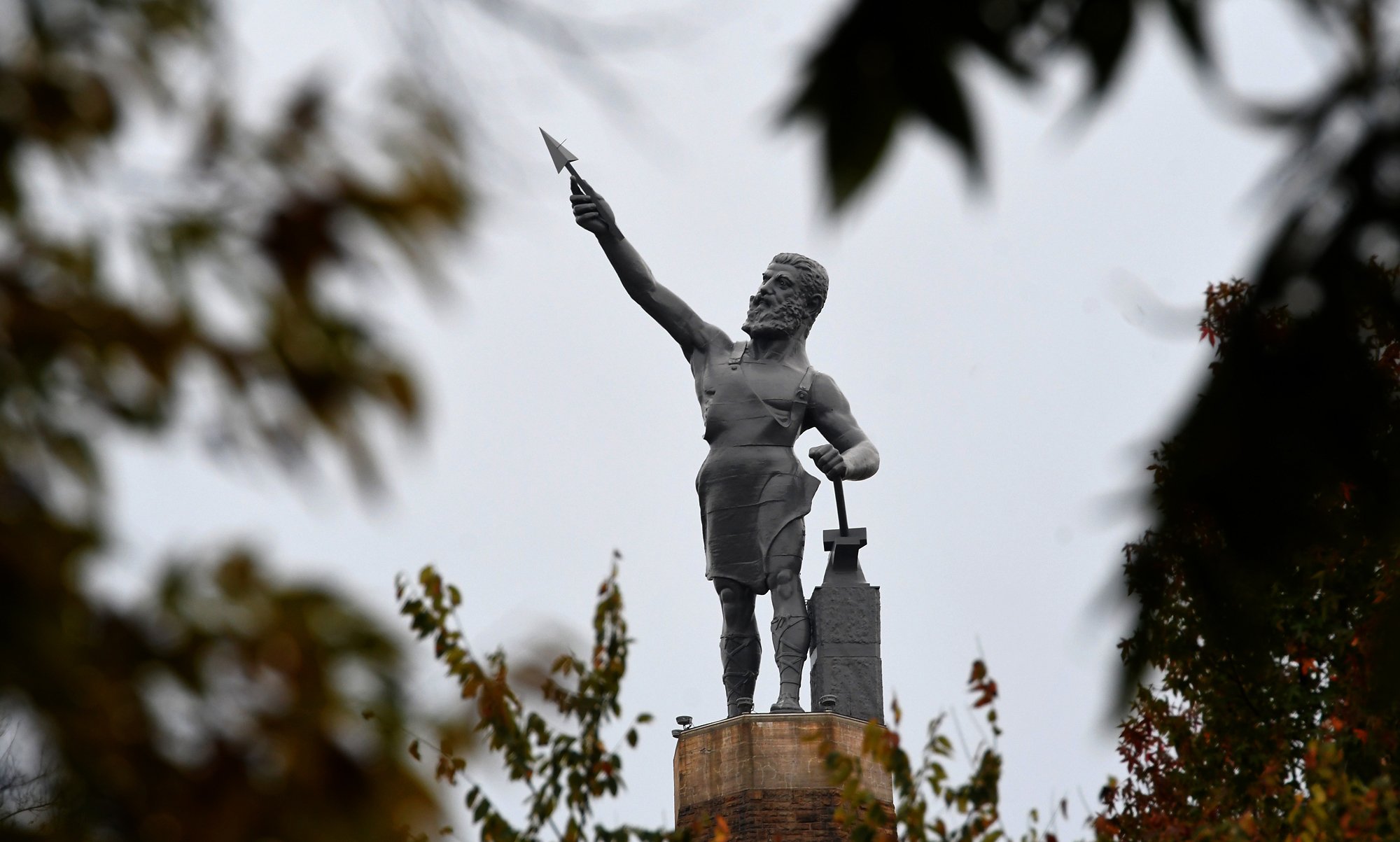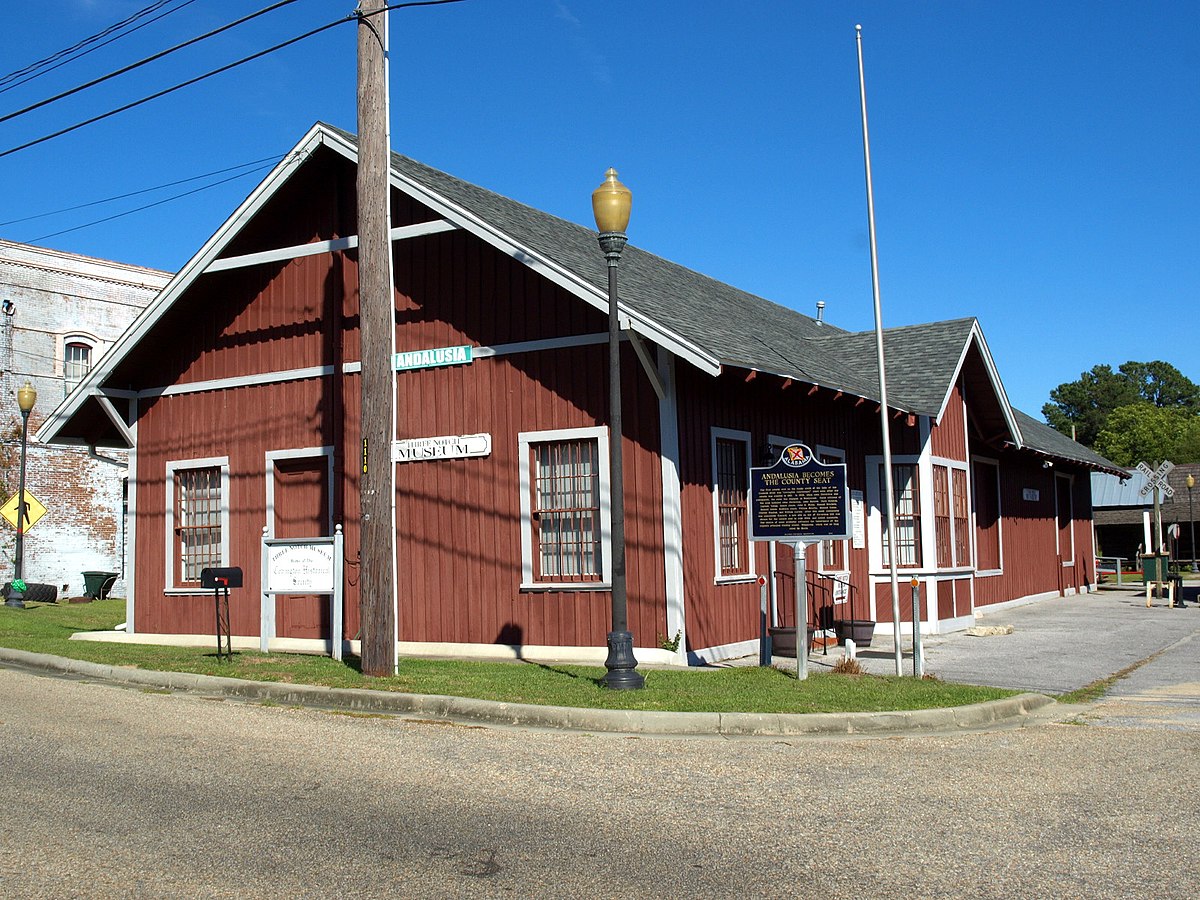The Lee County Historical Museum Has Several Interesting Attractions
The Lee County Historical Museum is a multi-exhibit that has two basic goals; to share the heritage as well as preserve it and its traditions in Lee County.
Also referred to as Pioneer Park, it is located in Loachapoka, Alabama, which has a very rich history.
The name Loachapoka in Muskogee or the Creek Indian Language means “turtle dwelling place”, and demonstrates its rich Native American heritage.
This small Alabama town is located less than one mile west of Auburn and is only five miles from the campus of Auburn University.
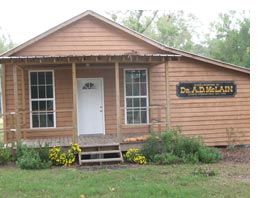 The Dr. McLain Building
The Dr. McLain BuildingThe museum was founded by the Lee County Historical Society, and it was set up to highlight not only the Native Americans, but the early pioneers that settled in the area today known as Lee County.
This Pioneer Park is made up of nine different structures that represent different periods of history in the area.
There are also several gardens that also show the visitor different time periods.
The Major Attractions at the Lee County Historical Museum
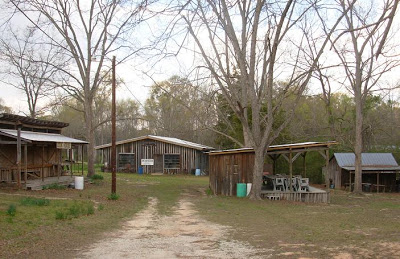 The Lee County Historical Museum In Loachapoka Alabama
The Lee County Historical Museum In Loachapoka AlabamaThe First Four Attractions
- The Old Trade Center
- The Ruth Purdy Speake Cabin
- The Taylor Whatley Building
- The Blacksmith Shop
The Old Trade Center
The Old Trade Center is considered to be the major attraction at the Lee County Historical Museum for one reason; it is the oldest commercial structure in the county.
It became the center of trade because the railroad in the area at the time ended at Loachapoka.
Because of this, it became the main location these early settlers went to both buy and sell.
This building also serves as the main office building and has two rooms located downstairs that show the history of Lee County.
The first room has exhibits about the history, and the second places special emphasis on Rousseau’s Raid that occurred during the Civil War.
It also has several exhibits that show the visitors items sold in these early days, including horse collars and handmade items.
It also shows how the town got its strange name from the Creek Indians.
The Ruth Purdy Speake Cabin
Next is the Ruth Purdy Speake Cabin, which shows the visitor what a typical home looked like in these early years.
This cabin was originally located in another county but was moved to the museum by the Lee County Historical society.
It also contains a one-room school, which was considered standard for the early settlers.
It was named after the long-time president of the LCHS and has demonstrations on how early cooking was done in these cabins.
The Taylor Whatley Building
The next exhibit at the Lee County Historical Museum is the Taylor Whatley building, which was named after a board member of the LCHS, the Lee County Historical Society.
It shows the visitor the agricultural history in the area by the use of several artifacts and the tools the pioneers used.
These artifacts help to show how the settlers did their blacksmithing, their dairies, as well as how they produced agriculture.
The Blacksmith Shop
Next is the Blacksmith Shop, which is a very unique replica of what a blacksmith shop looked like in the pioneer days.
It is also serves as a demonstration area, where local blacksmiths meet twice a week to demonstrate their skills and crafts for visitors.
It was built for the museum in the 1980’s by the local Alabama Forge Council.
The Next Five Attractions
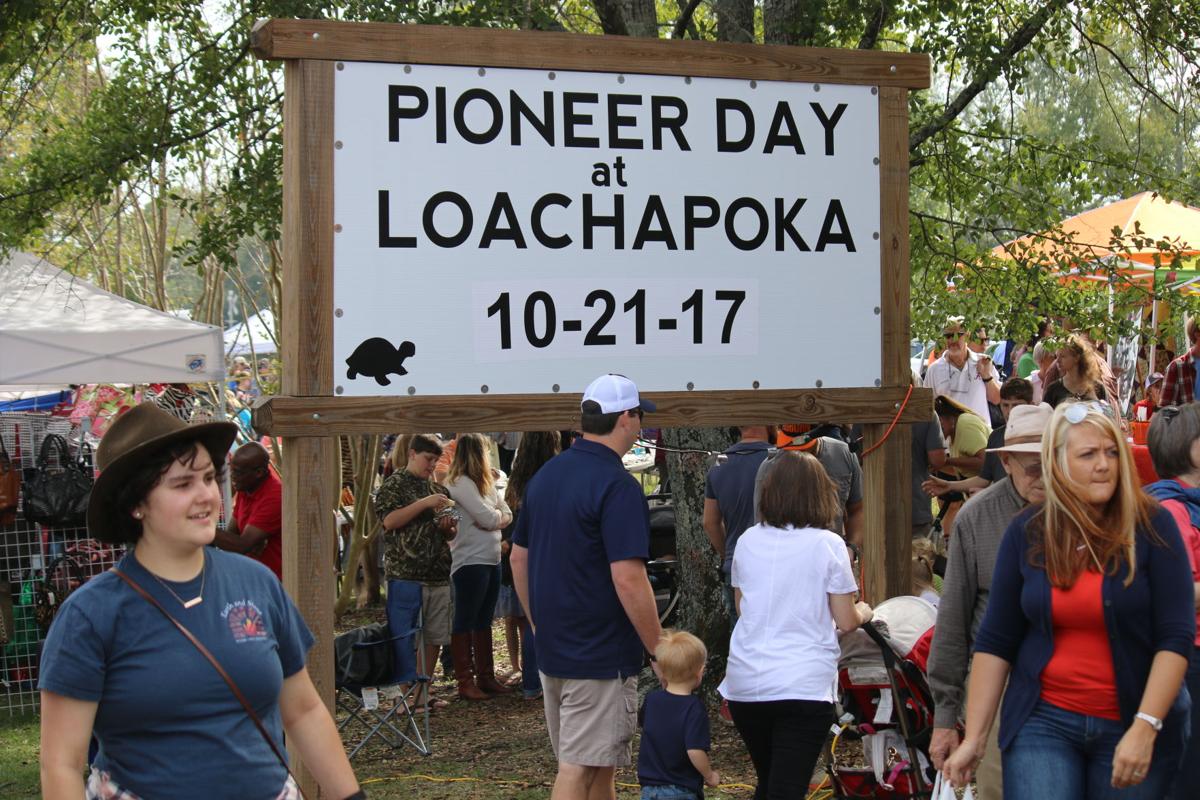 Pioneer Day At The Lee County Historical Museum
Pioneer Day At The Lee County Historical Museum- Dr. McLain’s Office
- The Loachapoka Gin Office
- The Cook House
- The Loachapoka Calaboose
- The Bernard-Newell Log Home
Dr. McLain’s Office
The first attraction on this next list at the Lee County Historical Museum is Dr. McLain’s Office.
This building was originally owned by Doctor Alexander McClain, who practiced medicine from 1902 until 1956 in Salem, Alabama.
This exhibit recreates how a doctors’ office looked in the early 1900’s, and includes the office, a pharmacy, as well as a soda fountain.
It also served as the post office for the town of Salem.
This building was once a barn as well as a warehouse for the cotton gin and was reconstruction with all volunteers in 2008.
The Loachapoka Gin Office
Next is the Loachapoka Gin Office, which was also called the Ward Brothers Gin.
It used to serve not only as gin office; it also served as the Town Hall for the city, as well as the local polling place where the pioneers voted.
It was eventually converted to a cotton gin, and the office as well as the cotton scale has been fully restored.
It helps to show the history of the cotton production that thrived in the state of Alabama.
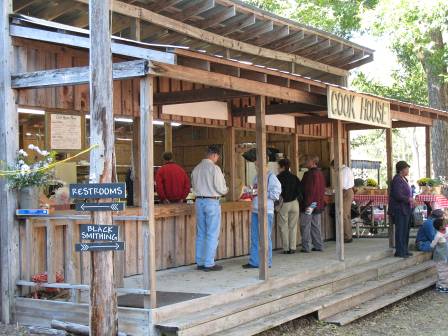 The Cook House at the Lee County Historical Museum
The Cook House at the Lee County Historical MuseumThe Cook House
The Cook House was built as part of the Lee County Historical Museum to serve meals during special events at the village.
Some of these events include the Pioneer Days as well as the Poarch Festival.
The Loachapoka Calaboose
The next exhibit is the recreation of the local jail, which is fondly called the “Calaboose”.
The original jail was left unattended and ruined but was fully restored in the year 2008.
The outside of the building has been totally recreated, but the interior doors and the bars are from the original jail in the town of Loachapoka.
The Bernard-Newell Log Home
The final major attraction is the Bernard-Newell Log Home, which was built in the year 1830, and is believed to be the second oldest log cabin in the entire state.
It is tastefully furnished with numerous artifacts as well as furniture, which are replicated from the late 1800’s.
The posters and artifacts show visitors what these early log homes looked like for these early settlers.
There are also several gardens at the Lee County Historical Museum.
The first is the Crops Garden, which demonstrates crop production in the pioneer days, and also has medical herbs that would have been grown by Dr. McLain.
Grandma’s Garden shows how a typical garden would have looked a hundred years ago and it is primarily a flower garden.
There is also a Native American Garden which has corn, beans, as well as squash, which represents what the Native American’s called the “three sisters”.
These attractions not only make the Lee County Historical Museum one of Alabama’s best kept secrets, but it is also one of the best of all the Alabama’s smaller museums.
References
https://www.leecountyhistoricalsociety.org/buildings-exhibits

Alabama Gift Store
Numerous Items for You and Your Family to Enjoy
See it here at the Gift Store
Copyright 2019-2023 Alabamabackroads.com
All Rights Reserved
